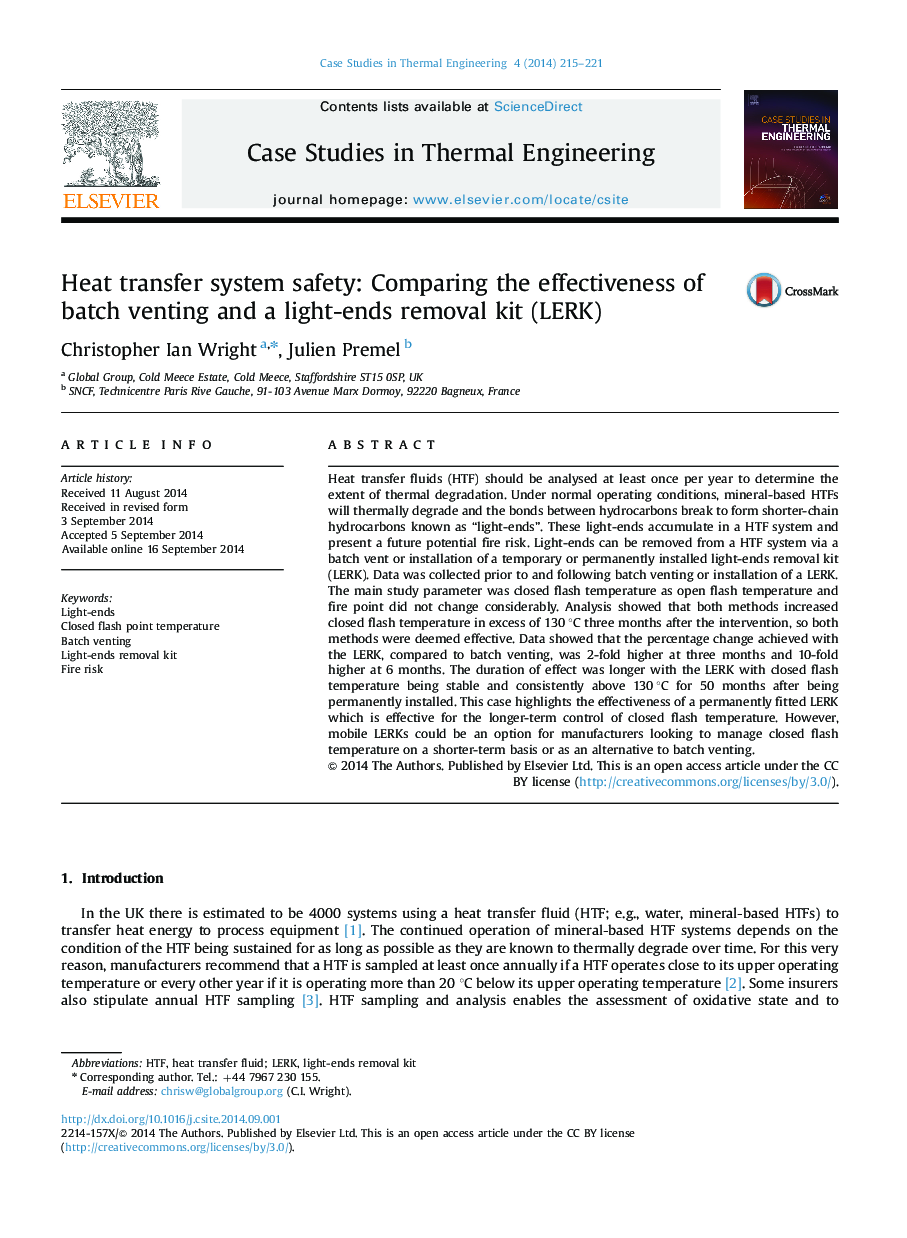| کد مقاله | کد نشریه | سال انتشار | مقاله انگلیسی | نسخه تمام متن |
|---|---|---|---|---|
| 765516 | 1462481 | 2014 | 7 صفحه PDF | دانلود رایگان |

Heat transfer fluids (HTF) should be analysed at least once per year to determine the extent of thermal degradation. Under normal operating conditions, mineral-based HTFs will thermally degrade and the bonds between hydrocarbons break to form shorter-chain hydrocarbons known as “light-ends”. These light-ends accumulate in a HTF system and present a future potential fire risk. Light-ends can be removed from a HTF system via a batch vent or installation of a temporary or permanently installed light-ends removal kit (LERK). Data was collected prior to and following batch venting or installation of a LERK. The main study parameter was closed flash temperature as open flash temperature and fire point did not change considerably. Analysis showed that both methods increased closed flash temperature in excess of 130 °C three months after the intervention, so both methods were deemed effective. Data showed that the percentage change achieved with the LERK, compared to batch venting, was 2-fold higher at three months and 10-fold higher at 6 months. The duration of effect was longer with the LERK with closed flash temperature being stable and consistently above 130 °C for 50 months after being permanently installed. This case highlights the effectiveness of a permanently fitted LERK which is effective for the longer-term control of closed flash temperature. However, mobile LERKs could be an option for manufacturers looking to manage closed flash temperature on a shorter-term basis or as an alternative to batch venting.
Journal: Case Studies in Thermal Engineering - Volume 4, November 2014, Pages 215–221